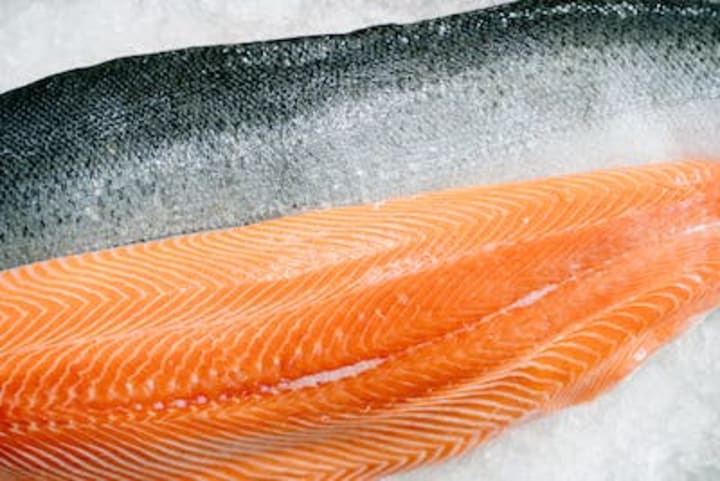The best foods for joint health
Introduction

The best foods for joint health
Introduction
The pain of aging may be just around the corner, but creaking bones and soft joints don't have to get in the way of your future. With a little knowledge, these foods can improve joint health and help manage joint pain. A joint is where two or more bones join to allow movement. Joints are made up of layers of cartilage that cover bones, muscles, ligaments, and synovial fluid. Each of them is responsible for allowing pain-free movement. Maintaining healthy joints is important to prevent or delay the development of osteoarthritis. A balanced, nutritious diet is the cornerstone of joint health. In fact, certain nutrients have been shown to reduce pain and improve joint mobility by reducing inflammation, keeping joints lubricated, and strengthening bones and muscles.

Incorporate a joint-friendly diet
While there are several important nutrients that are beneficial to joint health, a balanced overall diet is best for maintaining pain-free joints in the long term. USDA My Plate provides a visual guide to building a balanced plate with an emphasis on high-protein, high-fiber carbohydrates. To ensure a joint-friendly diet, try to eat a variety of fruits and vegetables. This also helps you maintain a healthy weight and reduces stress on your joints and bones. A diet high in healthy fats, such as omega-3 fatty acids, can help prevent and reduce inflammation, reducing pain and swelling in sensitive joints. In addition, high-fiber carbohydrates, fruits, and vegetables contain antioxidants, vitamins, minerals, and fiber that exert direct anti-inflammatory effects when needed.
Foods to improve joint health
Joint pain can make everyday life difficult. Luckily, there are simple ways to improve and maintain joint health. Eating plenty of these delicious, nutritious foods will give your joints the nutrients they need to work optimally without pain. Here are the science-backed foods you should be eating more of to promote joint health:
Salmon

Fatty fish such as salmon, mackerel, and sardines are rich in omega-3 fatty acids. These fats are known for their anti-inflammatory properties and may have beneficial effects on people suffering from joint pain and osteoarthritis (a condition that causes degeneration of cartilage in joints). Also, joint health is directly affected by joint-specific inflammation, so a diet rich in anti-inflammatory omega-3 fatty acids is required. A meta-analysis found that eating fatty fish (such as salmon) at least twice a week reduced rheumatoid arthritis activity and the overall risk of developing the disease. Other omega-3 fatty acid sources are walnuts, chia seeds, and flax seeds.
Spinach
Leafy greens like spinach, broccoli, and kale are full of antioxidants that help reduce joint inflammation and the symptoms of rheumatoid arthritis. Spinach is also a great source of phytochemicals that fight free radicals and prevent oxidative damage. Other phytochemical and antioxidant sources are broccoli, kale, beets, carrots, celery, and pears.
Blueberry
Blueberries are a nutritious fruit rich in phytonutrients and antioxidants. The polyphenols and flavonoids in blueberries help prevent degenerative diseases such as joint pain and reduce inflammation. Blueberries also help prevent age-related bone loss and improve bone density. Other sources of phytonutrients and antioxidants are blackberries, strawberries, raspberries, and cranberries.
Linseed
Flaxseed is an excellent source of vitamin E and omega-3 fatty acids. In fact, flax is the best source of plant-based omega-3 fatty acids. Some studies suggest that vitamin E may prevent cartilage breakdown and reduce joint pain in people with osteoarthritis. Vitamin E can stop the progression of osteoarthritis by eliminating oxidative stress and reducing joint inflammation. Omega-3 fatty acids suppress the inflammatory response and prevent joint damage and related diseases. Other nutritious nuts and seeds are chia seeds, walnuts, and almonds.
Oatmeal

High-fiber whole grains such as oatmeal, brown rice, and quinoa contain powerful anti-inflammatory properties that benefit your overall health and help maintain healthy joints. One serving (1 cup) of oatmeal contains 4 grams of fiber. One study observed that patients with rheumatoid arthritis and those at risk for it develop poor gut microbiota. This suggests that consuming fiber-rich whole grains like oatmeal can restore gut symbiosis and improve the body's immune response. Other whole grains you can consider are brown rice, quinoa, barley, and buckwheat.
Turmeric

Turmeric is a plant that has been used medicinally for centuries. Over the past 35 years, researchers have begun to realize the benefits of using turmeric. Curcumin is the most important nutrient found in turmeric. Both turmeric and curcumin are anti-inflammatory and have been used for thousands of years to reduce joint pain. Studies show that curcumin does reduce pain in people with osteoarthritis.
Green Tea
Green tea contains more antioxidants than any other tea. Catechins, a type of antioxidant found in green tea, reduce inflammation and protect cartilage from further breakdown. One study found that the antioxidant and anti-inflammatory properties of green tea reduced disease activity in patients with rheumatoid arthritis. Other foods high in catechins are matcha green tea, apples, apricots, and strawberries.
Additional Tips for Joint Health
Diet is an important factor in maintaining healthy joints, but lifestyle factors may be more important. Take a moment to evaluate your habits and use the following joint health tips:
• Stay active. If you move your body consciously throughout the day, joint pain will go away. Muscle weakness and a sedentary lifestyle are risk factors for osteoarthritis.
Sit less. For most days of the week, get up and walk around every hour or do 30 minutes of light exercise.
• Lift weights. Muscle weakness is inevitable with age. Muscle weakness and muscle degeneration are risk factors for joint injury. On the other hand, vigorous exercise such as weightlifting can prevent muscle wasting, improve muscle strength, and reduce bone loss, all of which are important for healthy joints.
• Reduce stress. Stress, anxiety, and depression affect joint pain. Find ways to reduce stress on a daily basis. Try some stress relief ideas. Meditate for 10 minutes, read your favorite book, listen to your favorite music, go for a walk, talk to a friend, or see a health professional such as a therapist.
• Maintain a healthy weight. Carrying too much weight puts stress on your joints and can lead to joint pain. Focus on nourishing your body with balanced meals and snacks to promote a healthy weight and prevent joint damage.
Conclusion
Eating a balanced diet rich in healthy fats, fiber, vitamins, minerals, and antioxidants is important for maintaining healthy joints. There is no silver bullet, but incorporating these foods into your weekly dietary routine can help reduce pain and prevent future illness. Always discuss your concerns with your doctor before making any dietary changes.
https://dayowls.blogspot.com/2023/07/the-best-foods-for-joint-health/
health2livefit.wordpress.com/2023/07/08/the-best-foods-for-joint-health/
#Joint health,#Joint pain,#Foods for joint health,#Improve joint health,#Manage joint pain,#Joint-friendly diet,#Omega-3 fatty acids,#Anti-inflammatory foods,#Rheumatoid arthritis,#Osteoarthritis prevention,#Cartilage health,#Antioxidant-rich foods,#Phytonutrients for joints,#Vitamin E for joints,#Fiber-rich diet,#Turmeric benefits,#Green tea antioxidants,#Tips for joint health,#Stay active for joints,#Muscle strength for joint health,#Stress relief for joint pain,#Maintain a healthy weight,#Balanced diet for joint health,#Prevent joint damage
About the Creator
ghulam muhammad
Name: Ghulam Muhammad
Freelance Health and wellness Blogger,
Blog sites: health2livefit.wordpress.com
https://dayowls.blogspot.com/





Comments
There are no comments for this story
Be the first to respond and start the conversation.